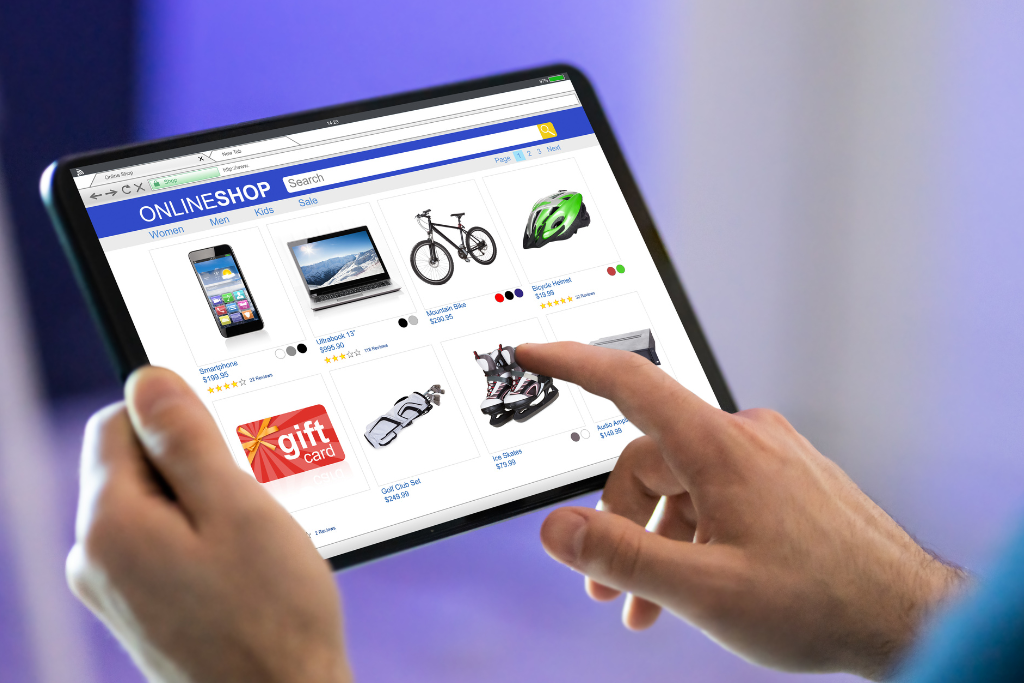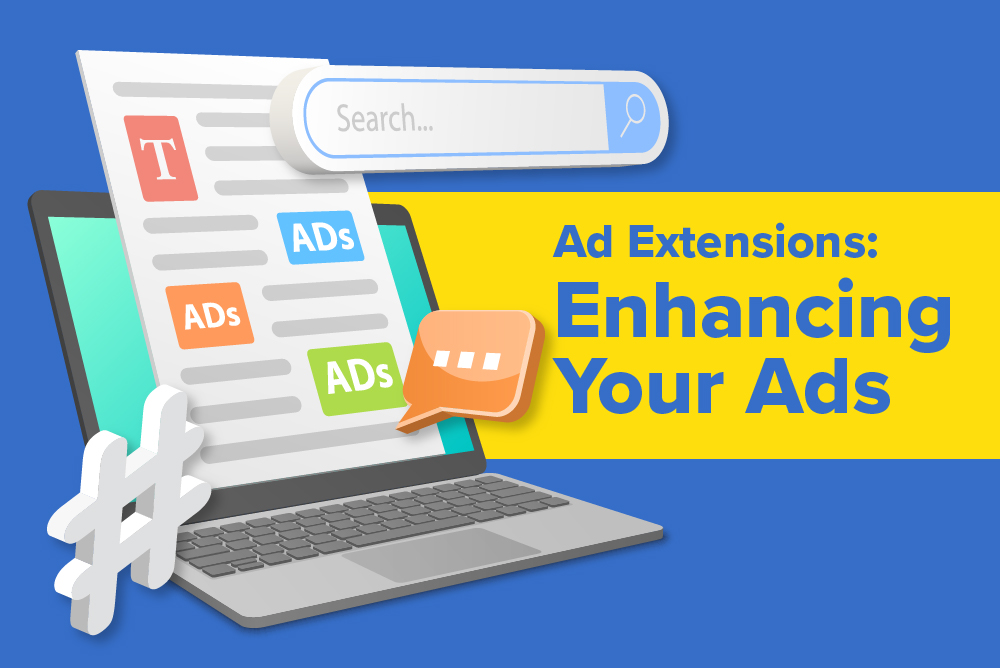Pay-Per-Click (PPC) campaigns for e-commerce businesses are strategic online advertising initiatives aimed at driving traffic, increasing visibility, and ultimately boosting sales within the digital marketplace. These campaigns involve bidding on relevant keywords and crafting compelling ad copy to display advertisements when potential customers search for related products or services.
Tailored PPC campaigns allow you to address the unique needs of your e-commerce niche, optimise ad spend, and ultimately achieve a competitive edge in the online marketplace.
It’s imperative because it ensures that your advertising efforts are finely tuned to align with your specific goals and target audience. By customising your campaigns, you can focus on the products or services that matter most to your business, allocate your budget efficiently, and maximise the return on your advertising investment.
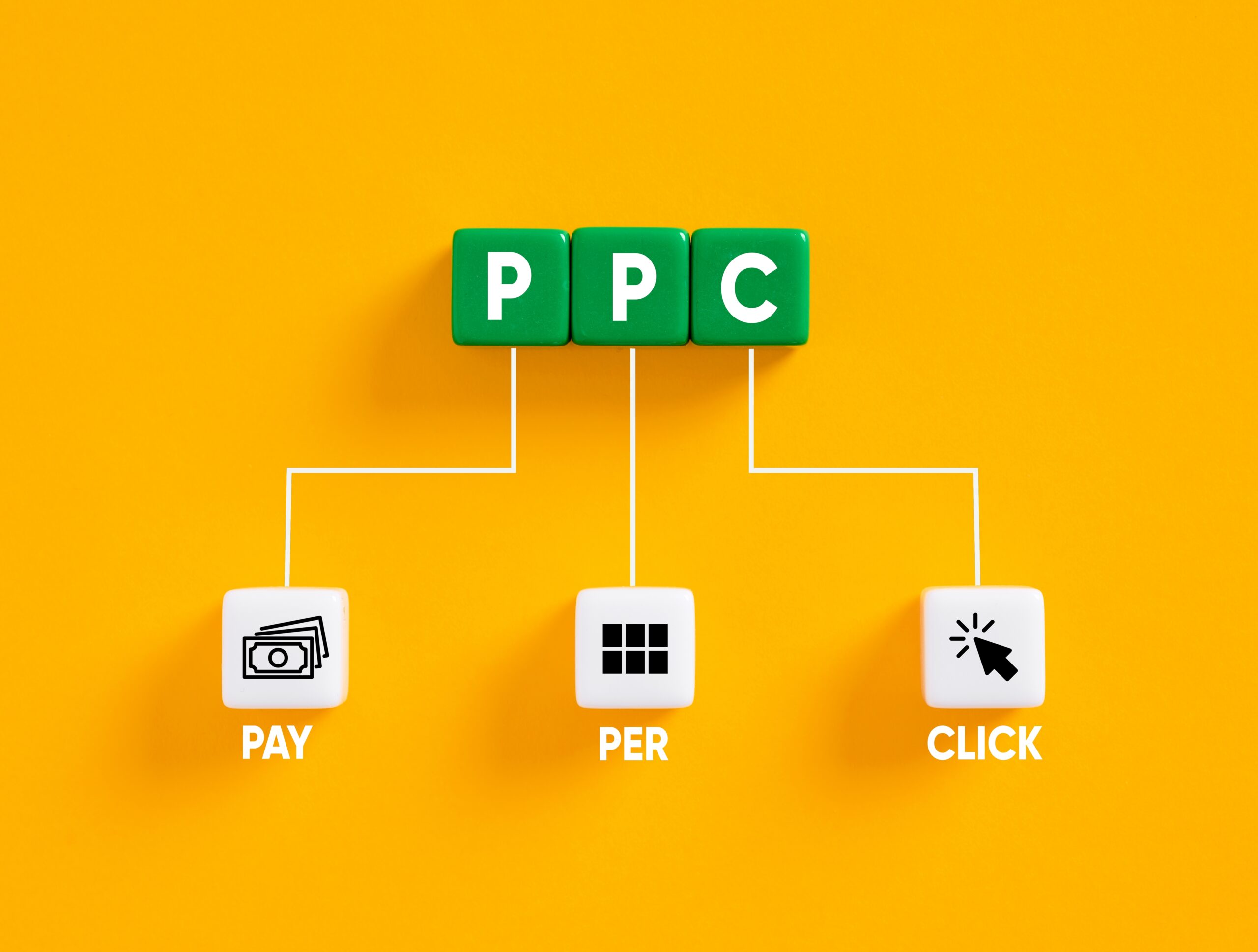
How To Tailor Your Pay-Per-Click (PPC) Campaigns For E-Commerce Success
Now that we’ve established the importance of PPC for e-commerce, let’s explore four simple strategies for tailoring your campaigns to your specific business needs.
1. Identify your e-commerce store’s target audience
The first step in any successful PPC campaign is identifying your e-commerce store’s target audience. Who are your ideal customers? What do they seek online? What motivates them to click that Buy Now button?
By understanding your audience, you can create more targeted, compelling ads for your PPC campaign.
2. Use relevant keywords
Keywords are the backbone of PPC advertising. To ensure your ads reach the right people, you need to use keywords your potential customers will likely search for.
For instance, if you run an online shoe store, including keywords like “running shoes”, “athletic footwear”, and “stylish sneakers” can enhance the visibility of your e-commerce business. Tools like Google’s Keyword Planner can help you identify relevant keywords for your e-commerce business.
3. Create effective PPC ad copy
Next, creating compelling ad copy another critical factor affecting your PPC campaigns for your e-commerce business. Here are three tips:
Write compelling headlines: Your headline is the first thing users see. Make it catchy, relevant, and engaging to draw users in.
Use strong calls-to-action: A solid call-to-action (CTA) can significantly increase your click-through rates. Make your CTAs clear, concise, and compelling.
Incorporate keywords: Including relevant keywords in your ad copy can improve your ad relevance and Quality Score, potentially reducing your CPC.
Once you’ve added your keywords, take a look at the Quality Score. This metric used by Google Ads reflects the quality and relevance of your keywords and PPC ads. A higher Quality Score can lead to lower costs and better ad positions.
4. Set a budget
Don’t neglect your PPC campaign’s budget either.
Generally, the first step to setting your budget involves multiplying the average monthly searches for all relevant keywords, based on your Keyword Planner report by a targeted search impression share (commonly set at 50% or 70%). This calculation provides an estimate of the number of impressions your ads are likely to receive for all the keywords you’ve researched.
Next, you’ll want to estimate the likely volume of clicks your ads might generate. To do this, multiply the projected number of impressions by an anticipated click-through rate (CTR).
If you’re unsure about what CTR to expect, industry-specific CTR benchmarks for e-commerce businesses can be useful for setting a realistic figure for your business. Take a look at what your competitors are doing. Tools like SEMrush or ahrefs can provide insights into competitors’ PPC strategies, including their ad spend.
Finally, to determine your PPC budget, multiply your estimated volume of clicks by the average cost-per-click (CPC) as indicated in your Keyword Planner report.
The formula to calculate your potential ad spend would then be:
Estimated volume of clicks x Average CPC = Projected PPC Ad Budget
If this is your first PPC campaign, consider starting with a smaller budget to test keywords and ad copy.
5. Optimise your e-commerce store’s landing pages
Your PPC ads are only as effective as the landing pages they lead to. Ensure your e-commerce store’s landing pages are optimised for conversions, with clear calls-to-action, high-quality images, and easy-to-navigate layouts.
For example, let’s have a look at the landing page for First Page’s Google Ads services. On our page, visitors are greeted with a concise headline that directly addresses our service offering: “Skyrocket your leads & sales in just 24 hours with our cutting-edge Google Ads services.” This immediately communicates what the page is about.
The call-to-action (CTA) is strategically placed and utilises action-oriented language, saying, “Get a Free Quote.” This encourages visitors to take immediate action, by entering their website.
In terms of visual elements, the landing page incorporates high-quality images that showcase their results and reviews, adding credibility and professionalism to their offering. The layout is designed for ease of navigation, with a straightforward menu and well-organised content sections that provide essential information without overwhelming the visitor.
Additionally, work history such as companies we have worked with so far are highlighted to capture the attention of potential clients.
6. Monitor & adjust your PPC campaigns for your e-commerce business
PPC advertising is not a set-it-and-forget-it strategy. It requires ongoing monitoring and adjustment to ensure optimal performance for your e-commerce business. Here’s how:
Key metrics like click-through rate (CTR), conversion rate, and cost per conversion can provide valuable insights into your PPC campaign performance. Understanding what these metrics mean can help you identify areas for improvement. For example, a low CTR might indicate that your ad copy isn’t compelling enough, while a low conversion rate might suggest issues with your landing page.
Use the insights from your data to optimise your PPC campaigns. This might involve tweaking your ad copy, adjusting bids, or refining your targeting to improve the performance of your PPC campaigns.

Understanding Pay-Per-Click (PPC) Platforms For E-Commerce
When it comes to PPC advertising for e-commerce, there are several platforms you can utilise to reach your target audience. Each platform has unique features and benefits, and the choice largely depends on your business goals and target audience.
1. Google Ads
Google Ads is the most popular PPC advertising platform. It allows your ads to appear on Google’s search engine results pages (SERPs) and other Google properties. Given Google’s vast reach, this platform is ideal for e-commerce businesses seeking a broad audience.
2. Bing ads
While Bing holds a smaller market share than Google, Bing Ads can still be a valuable part of your PPC strategy. Bing Ads often come at a lower cost-per-click (CPC) and face less competition, making it a cost-effective choice for smaller e-commerce businesses or those in niche markets.
3. Social media platforms
Social media platforms like Facebook, Instagram, and TikTok offer robust PPC advertising options. These platforms have extensive user data, allowing for highly targeted advertising. They’re particularly effective for businesses whose target audience is heavily active on social media.
For instance, according to eMarketer, when asked what drove them to make their most recent social media purchase, 45% of Gen Z consumers said they found products they like, underlining the power of search. However, one-third reported they purchased because they saw an ad for it, showing that advertising is just as important.
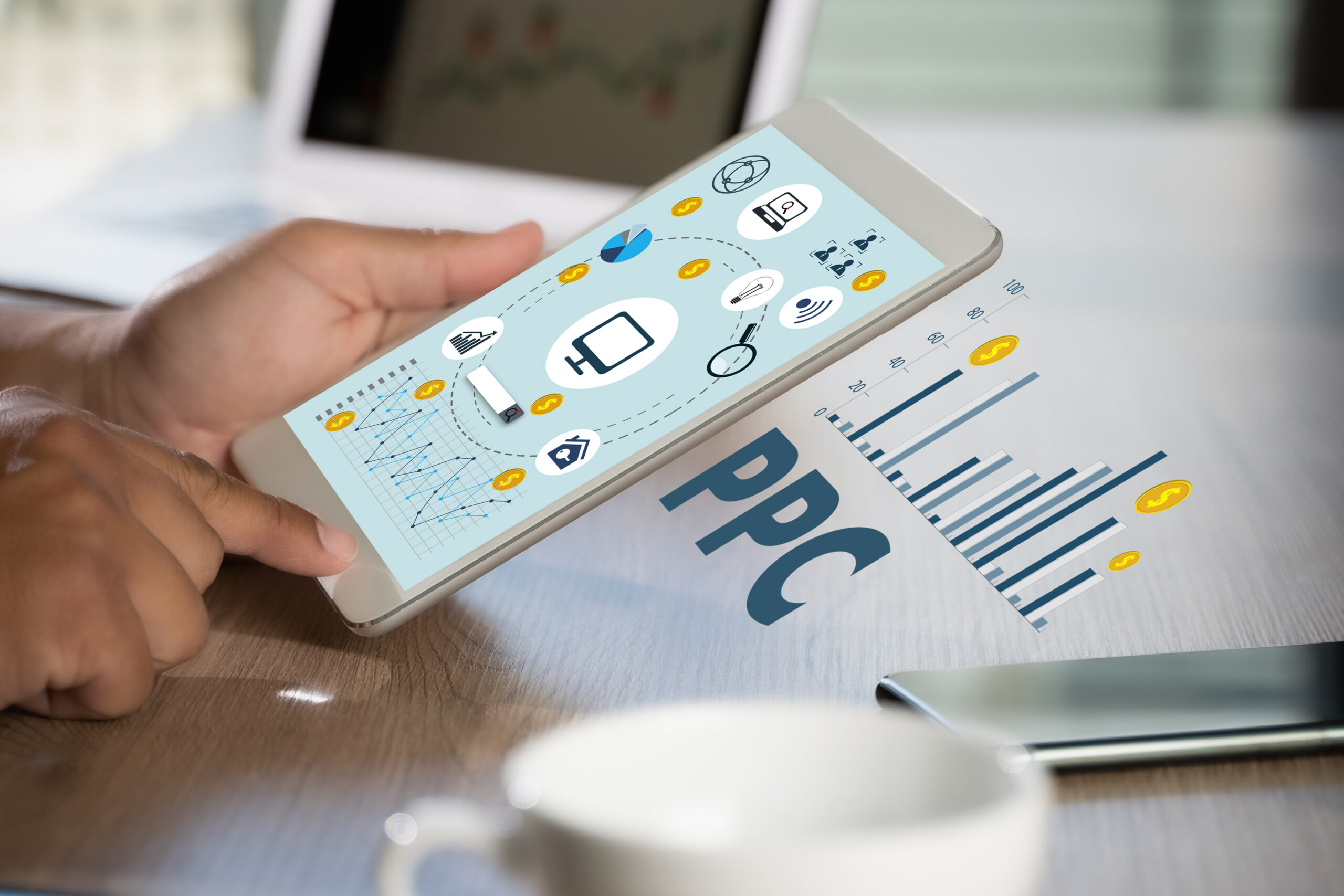
The Power Of Pay-Per-Click (PPC) Campaigns For E-Commerce
PPC advertising is a potent tool in the arsenal of e-commerce businesses. But why is it so?
1. Reach customers at the right moment
One of the critical advantages of PPC advertising for e-commerce businesses is its ability to reach potential customers when searching for products or services like yours. This is because users who type a query into a search engine express a clear intent. They’re actively looking for something, whether an answer to a question, a solution to a problem, or a product to purchase.
You can use PPC advertising to ensure your ads appear when users type in specific search terms related to your business. This means you’re reaching people likely to be interested in your products and actively looking to purchase. This type of targeted, intent-driven marketing can significantly increase the chances of conversion, driving traffic to your online store and boosting sales.
Additionally, you can tailor your campaigns to reach new markets or target specific demographics based on various factors, including geographical location, language, device, time of day, and more. For example, if you’re launching a new product likely to appeal to a particular age group, you can use PPC to ensure users see your ads in that age group.
2. Boost brand visibility
In addition to driving direct sales for your e-commerce business, PPC advertising can increase brand visibility. Even if users don’t click on your ad, they see it.
PPC can help increase brand awareness and recognition, ensuring that your e-commerce business is at the forefront of potential customer’s minds when they’re ready to purchase.
3. Retargeting for increased conversions
Retargeting, also known as remarketing, is a powerful feature of PPC advertising. It allows you to show ads to users who have previously visited your e-commerce site but have not purchased it. You can increase their chances of converting to your site by reminding these users of your products and services.
Through effectively leveraging PPC for your business, you can also ensure your advertising budget is spent most efficiently and profitably. It’s a flexible, measurable, and highly targeted form of advertising that can drive significant business growth.
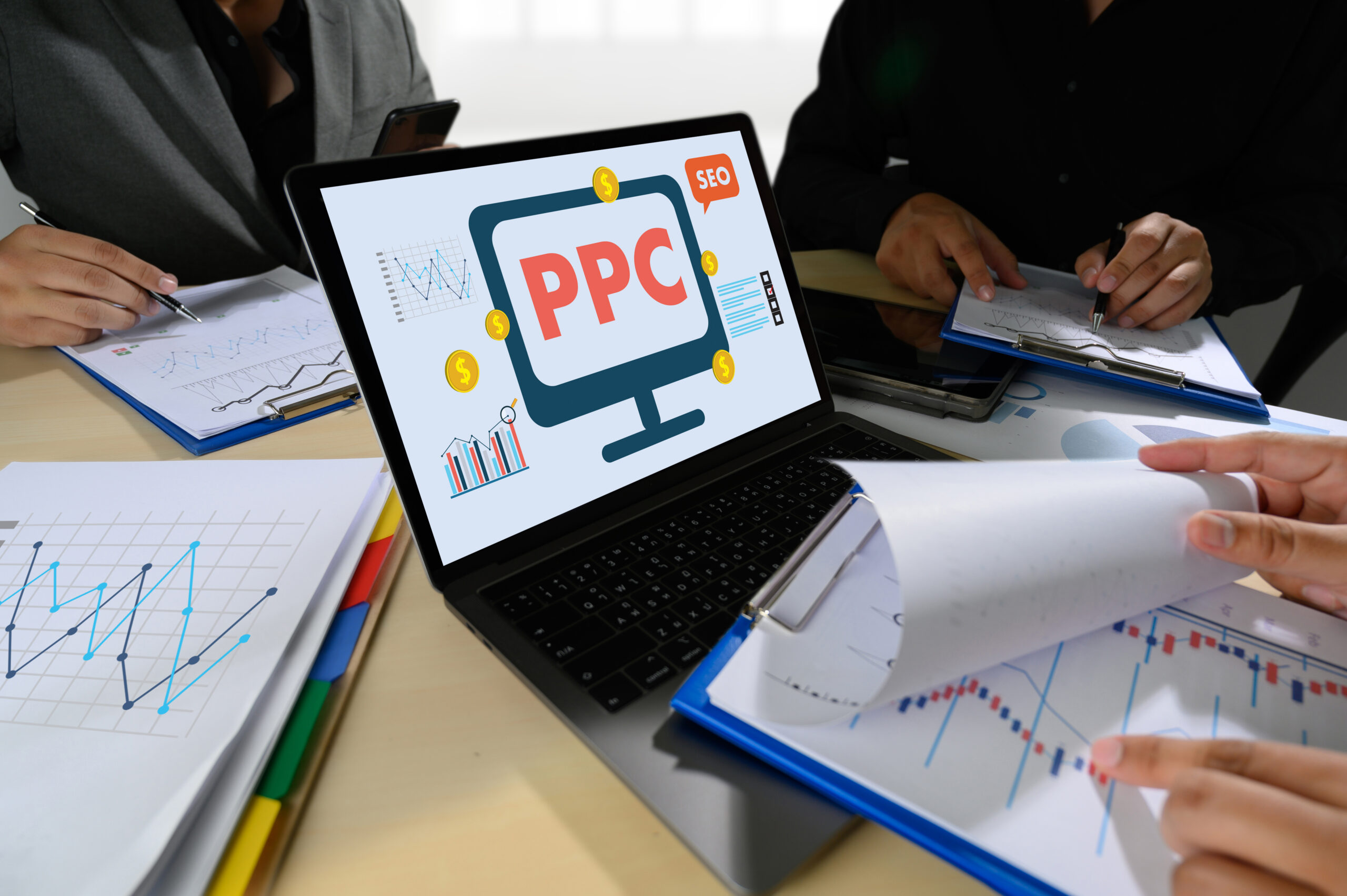
Unlock The Power Of Tailored Pay-Per-Click (PPC) Campaigns With First Page
When used effectively, PPC advertising is a powerful tool that can drive significant growth for an e-commerce business. By tailoring your campaigns to your specific business needs and audience, you can maximise your return on investment and set your e-commerce business up for long-term success.
Remember, the key to successful PPC advertising lies in understanding your audience, using relevant keywords for your PPC campaign, optimising your landing pages, and regularly monitoring and adjusting your campaigns. With these strategies in hand, you’re well on your way to mastering PPC for your e-commerce business.
Ready to take your PPC campaigns for your e-commerce business to the next level? Explore our PPC services such as Google Ads, Facebook Ads and others to see how we can help you optimise your PPC campaigns for high ROI. Or, if you need more clarification about the effectiveness of your current PPC efforts, why not take advantage of our free PPC ROI calculator?
We at First Page will provide you with a comprehensive analysis of your campaigns and actionable insights to improve your ROI. Start your journey to PPC success today!
